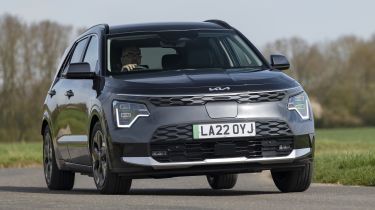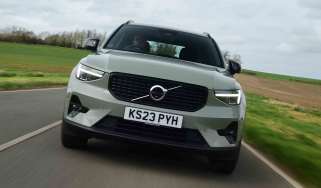Watchdog rules electric car range claims misleading on Mercedes and Kia ads
Two car brands have been rapped for advertising ‘official’ range figures with 100% battery charge, while recommending only 80% charging

The Advertising Standards Authority has upheld complaints against Kia and Mercedes for ads promoting the ‘official’ maximum range figures for new electric cars, and not the actual range drivers might reasonably expect to achieve.
Both companies quoted the WLTP maximum ‘combined’ range figure in adverts for the Kia Niro EV and Mercedes EQC respectively, each with an asterisk pointing to qualifying text providing limited information about the WLTP test regime.
WLTP stands for Worldwide Harmonised Light Vehicle Test Procedure, and refers to the standardised laboratory tests recognised by the UK government for generating legally-required passenger car economy and emissions data.
In the case of the Niro EV, the ASA ruling stated that consumers would interpret Kia’s claim of “up to 285-mile range” to mean the Niro EV was capable of achieving its 285-mile WLTP range as a maximum on a full battery charge in a significant amount of cases, and that the advertised range could be achieved on an amount of charge which was advisable for the car. However, it was generally not advisable to charge the car beyond 80 percent, and therefore any claim based on a 100 percent charge was not representative.
In the case of the Mercedes EQC, the ASA said consumers were likely to understand from the information provided that it could drive 254 miles with a 100 percent charge and, in the absence of any further qualifying information, that charging to 100 per cent and achieving a 254-mile WLTP range was typical and representative of the car. Yet consumers were not advised to charge the car to 100 per cent, since that was said to be detrimental to the battery.
The two rulings by the UK’s advertising watchdog effectively banned Kia and Mercedes from advertising similar claims in future, unless they’re prepared to add clarity around real world vehicle range. This is in spite of the long-standing conventions around advertising range and miles per gallon claims on cars, where manufacturers have for decades provided government-approved ‘official figures’ (including WLTP figures) with an asterisk pointing to only a cursory description of the relevant test parameters.
What does this mean for EV advertising in general?
Auto Express asked the ASA to explain the background to the latest rulings, which could have a significant impact on the way EV manufacturers promote the range of their vehicles. They told us that while consumers have a deeper inherent understanding of real-world miles per gallon claims versus official test figures in petrol and diesel cars, confusion is more widespread when it comes to EVs.
“We're not saying an asterisk is necessarily a hundred percent wrong for explaining these things, but rather is the text that explains it clear enough?”, ASA spokesman Toby King explained. “We know there's consumer confusion here, and that's especially true when it comes to electric vehicle mileage. So now, communicating that in an asterisk bullet point is going to be quite difficult on the sort of ads you might see on a bus stop.”
This points to a new demand for a level of information that the ASA recognises hasn’t been there before. “It’s fair to say we haven't necessarily had that level of clarity historically, particularly with electric vehicles,” says King. “So that's why these two warnings are there, to show where the line is. You (advertisers) need to include those qualifiers whenever you are giving a mileage, and in such a way that it's visible and easily understandable to the consumer.”
The ASA says it is receiving more complaints about electric car advertising, but that’s partially because the ads are becoming more commonplace.
“Our job is making it really clear to electric vehicle manufacturers and the advertisers what we expect when they’re advertising these kinds of vehicles. It’s making the boundary clear, so that they can make sure the consumers aren't being misled,” says King.
“If they are saying at 100 percent (battery charge) you can achieve this mileage, but simultaneously saying we don't recommend you charge your battery to 100 percent, that's going to be a problem because then that's not a mileage a consumer could reasonably expect.”
Mercedes told us it will abide by the ASA ruling, but made no further comment. Kia said: “The most commonly presented EV driving range metric is the WLTP ‘Combined’ range, as this demonstrates each vehicle’s range capabilities with multiple driving styles and environments in mind. This best reflects the majority of EV driver usage, and is immediately comparable with all other WLTP 'Combined' EV range figures available across the market. Kia is therefore confident in informing customers of the competitive benefits of its electric vehicles.”
Want the latest car news in your inbox? Sign up to the free Auto Express email newsletter...




